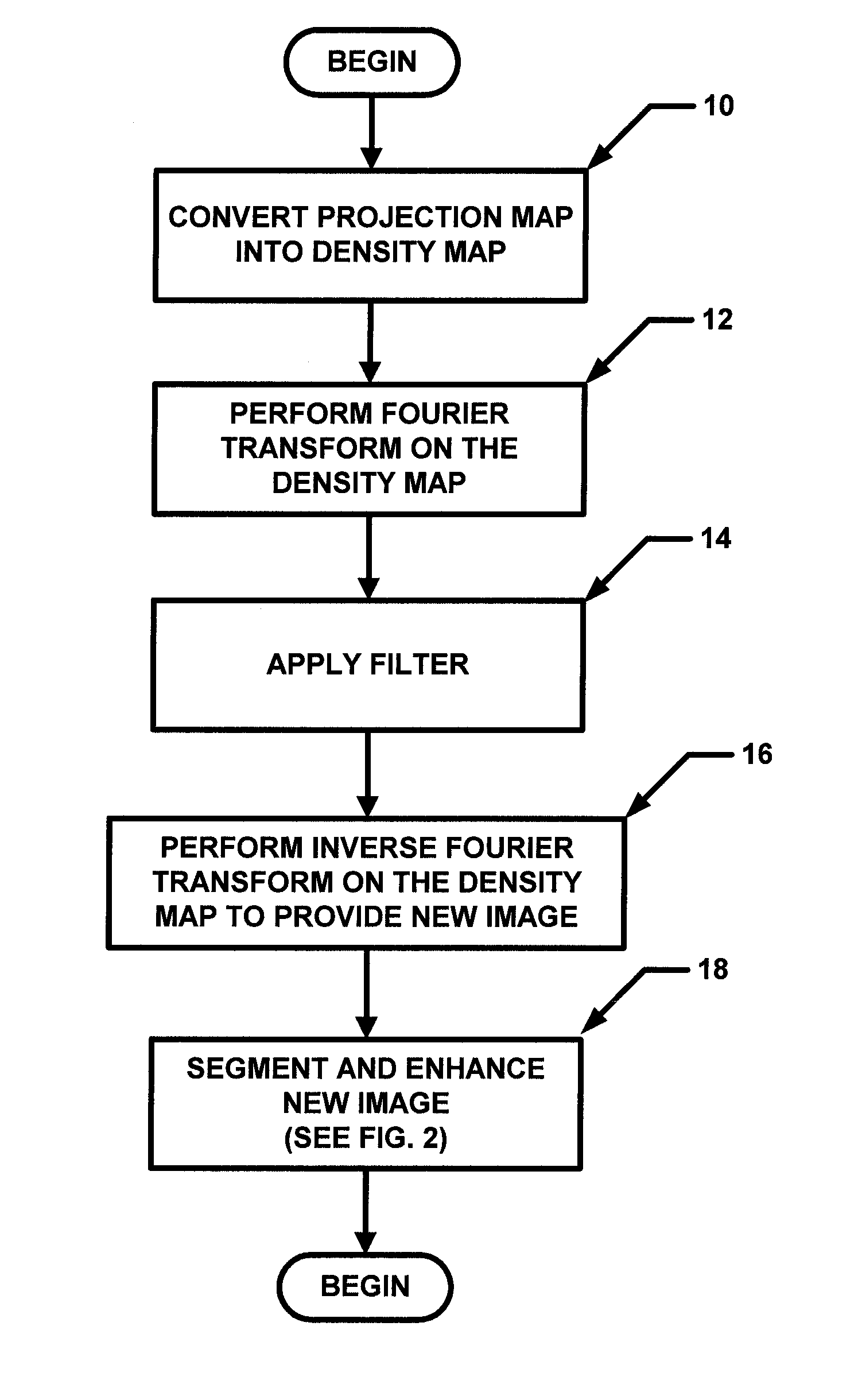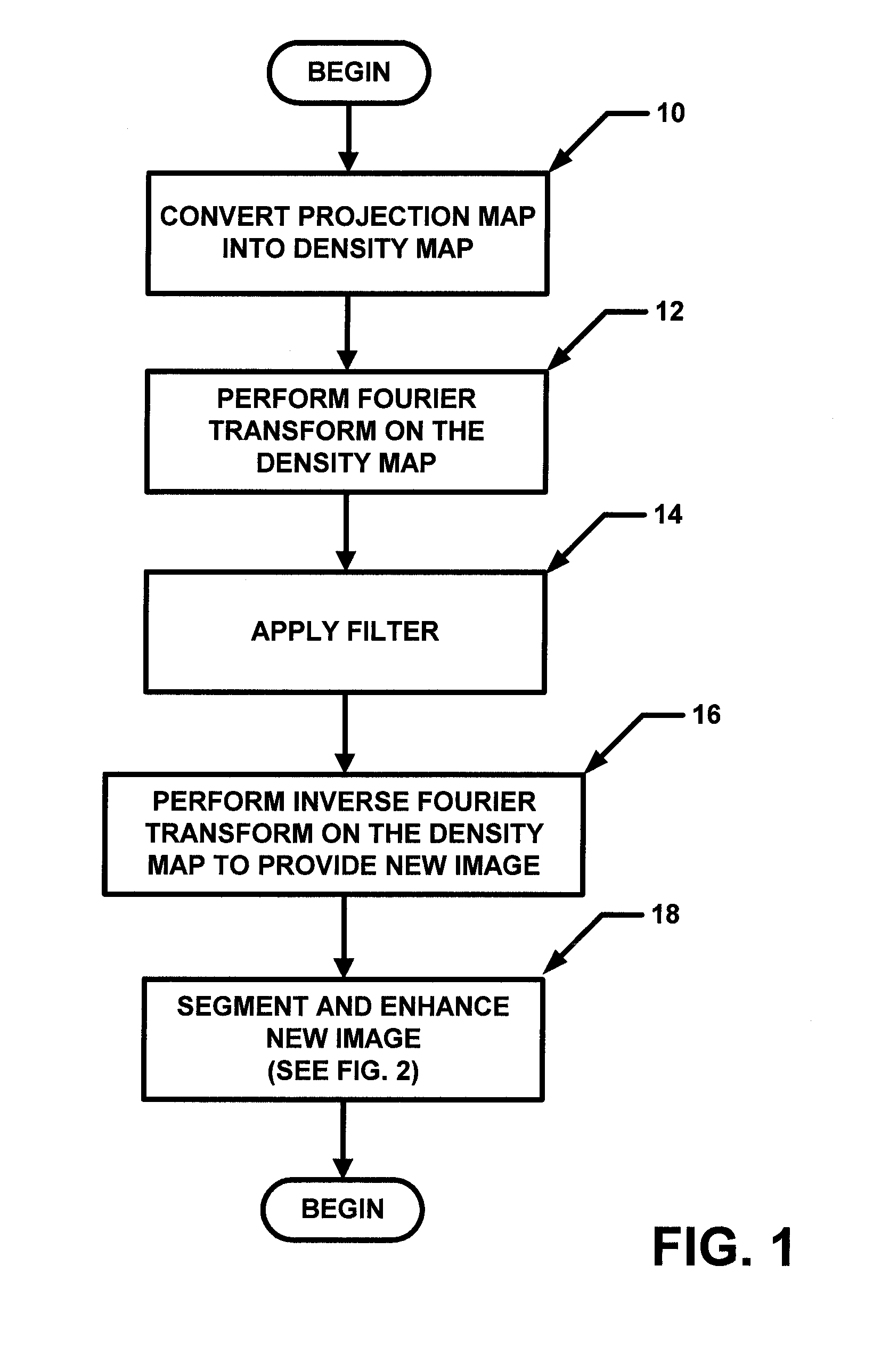Multi-threshold peripheral equalization method and apparatus for digital mammography and breast tomosynthesis
- Summary
- Abstract
- Description
- Claims
- Application Information
AI Technical Summary
Benefits of technology
Problems solved by technology
Method used
Image
Examples
Embodiment Construction
[0019] In general overview, the general concept described herein is to estimate the normalized thickness profile (NTP) of a breast from an image (e.g. a mammogram image) and enhance the peripheral area. This can accomplished by dividing the NTP from the mammogram. In one particular but exemplary embodiment, a projection mammogram was first segmented into “breast” and “background” regions using a threshold value computed using the Otsu technique. A segmentation image (SI) was generated in which pixels were assigned a first value (e.g. value of one) in a breast region and a second value (e.g. a value of zero) in background region. The projection was then converted into an attenuation image (AI). A two-dimensional (2D) low-pass filter was applied to the AI in the spatial frequency domain to obtain a blurred image (BI), which primarily reflected variations in breast thickness. The low-pass filter used had the following filter characteristic:
F(fx,fy)=1 / {[(1−|fx| / fc)ˆ128]*[(1−|fy| / fc)ˆ12...
PUM
 Login to View More
Login to View More Abstract
Description
Claims
Application Information
 Login to View More
Login to View More - R&D
- Intellectual Property
- Life Sciences
- Materials
- Tech Scout
- Unparalleled Data Quality
- Higher Quality Content
- 60% Fewer Hallucinations
Browse by: Latest US Patents, China's latest patents, Technical Efficacy Thesaurus, Application Domain, Technology Topic, Popular Technical Reports.
© 2025 PatSnap. All rights reserved.Legal|Privacy policy|Modern Slavery Act Transparency Statement|Sitemap|About US| Contact US: help@patsnap.com



